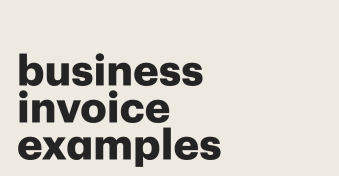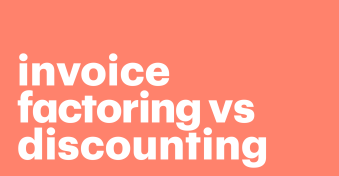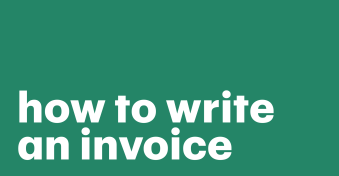An order acknowledgment and an invoice are two quite distinct things, but they do share some similarities.
Let’s look at the ways in which they’re similar and what the differences are when it comes to order acknowledgment vs. invoice.
What is an order confirmation or acknowledgment?
An order acknowledgment — or order confirmation — is the recognition by a seller that they’ve received a buyer’s order.
It also shows how much was paid, but isn’t meant for accounting purposes. You can view it as soon as an order is placed.
By confirming, the vendor also has the opportunity to verify whether they accept the order as it is or whether any changes may be required to any aspect of it.
If a buyer orders a back-ordered item or something that has been discontinued, the vendor can use the order confirmation to inform them about the status of those products.
It’s also a way to ensure that the order will arrive on time unless the vendor wants to offer a revised date, in which case it’s a chance for them to make this new date known.
Order acknowledgments are part of a process that allows you to plan ahead for your deliveries and make sure you don’t run out of important items.
Process for order acknowledgment
The following steps are typically taken with an order acknowledgment:
1. Purchase order is issued
The first step is to issue the purchase order to the seller.
A manual purchasing process involves filling out the order acknowledgment letter template and then emailing the vendor.
A purchasing system, on the other hand, both issues and sends the purchase order.
2. The seller acknowledges the purchase order
The next step consists of the seller acknowledging the purchase order.
The vendor can send the acknowledgment by email or use an automated system for this purpose.
3. Revision of purchase order
This step is optional and only required when a revision is needed or when the seller is unable to deliver the order as it is.
Order invoices explained
An order invoice is a document used to itemize and record a transaction between a seller and a buyer.
Usually, a business will send an invoice to a customer after they have delivered a product or service.
An invoice is also sometimes referred to as a “bill” or a “tab”.
Invoices usually include the following:
- Seller’s contact information
- Invoice number
- The purchase order number
- Description and pricing
- Payment terms.
It’s important to get invoicing right, no matter the size or type of business you run.
Avoiding common invoicing issues is a good first step towards swifter payments and better customer relationships.
Order acknowledgment vs. invoice: Key differences
The main difference between an order acknowledgment and an invoice is that an order acknowledgment is created by the seller to confirm they can provide the goods or services requested.
An invoice is created to request payment for goods or services that have already been provided to the buyer.
Other key differences:
- The order acknowledgment is generated when the buyer places an order, while an invoice is usually generated once it is complete.
- The order acknowledgment includes the details of the contract of the sale, while an invoice confirms the sale.
- The order acknowledgment will list the order details and the expected delivery date of the order. An invoice will also typically include the price, terms and conditions of payment, and the payment due date.
- Both the order acknowledgment and the invoice include details about the order and shipping details, but the invoice also includes the invoice number, date of delivery, and PO number.
- Buyers use order acknowledgments to track accounts payable, and vendors use invoices to track accounts receivable.
One big similarity:
- Both the order acknowledgment and the invoice are legally-binding documents.
Understanding confirmation of order emails and invoice emails
Order confirmation emails are transactional emails that are sent whenever an order is placed.
They consist of a digital receipt for the customer.
They’re completely unique and sent in response to each client’s order.
Businesses can use them to verify exactly what they need to process and send.
Invoice emails are just invoices in the form of an email sent to the buyer so that they can pay for the services they requested and received.
Order confirmation emails and invoices can also be a chance to cross-sell, highlight a great deal your company is currently offering, and promote your social media platforms.
Both order confirmation emails and invoice emails can be followed by a shipping update email.
Many people check their emails on mobile devices, so it’s essential that your email design is suited to customers’ phones and email apps, and not just computers.
You can use a blank invoice template already optimized for cell phones and just fill that out if you want an easy and professional solution.
Subject lines
Order confirmations will typically include subject lines such as “Order confirmed”, “We received your order”, “Thanks for your order”, or “Your [business] receipt”.
Some companies opt for a more colorful subject line, such as “Hooray! Your order has been received [emoji]”.
Using the word “receipt”, including the customer’s name, and including an emoji can all help improve email opening rates.
Some companies will also add a call to action (CTA) button to encourage customers to buy more.
Invoice subject lines are simpler, with phrases such as “Invoice for order number [x]”, or “Invoice for [Brand] order”.
With invoices, simpler is often better since it’s a very transactional and straightforward interaction.
Examples of invoice email and order confirmation email templates
Here is an example of a free invoice template from PandaDoc:
It’s itemized, simple, and clear. It includes spaces for all vital information, like billing details, breakdown of costs, date of issue, and due date.
Here is an example of a simple order confirmation email template:
Subject line: Thank you for your order: Order number 12345678
Body copy:
Hi [Customer’s name],
Thanks for placing your recent order with [Company name]. Your order number is 12345678. The following are details of your order:
[Itemized breakdown of items on order]
Delivery is currently expected on [Insert date].
Please contact us on [insert contact details] if you have any issues or questions.
Kind regards,
[Company or contact name]
Create your order acknowledgment and invoice with PandaDoc
PandaDoc offers a plethora of free templates for your invoices, order confirmations, and much more.
You can create an account in seconds and get started straight away.
The free invoice templates are easy to edit and intuitive to use.
Disclaimer
PandaDoc is not a law firm, or a substitute for an attorney or law firm. This page is not intended to and does not provide legal advice. Should you have legal questions on the validity of e-signatures or digital signatures and the enforceability thereof, please consult with an attorney or law firm. Use of PandaDocs services are governed by our Terms of Use and Privacy Policy.


